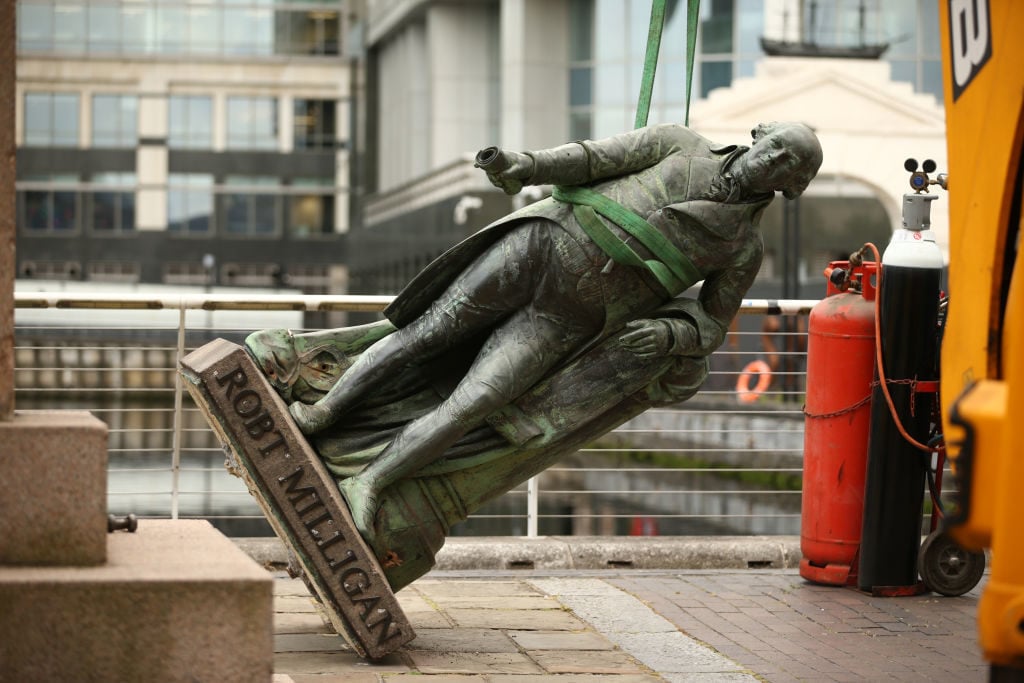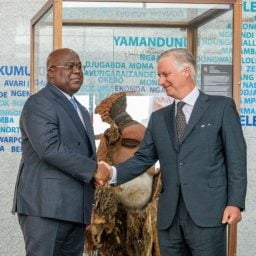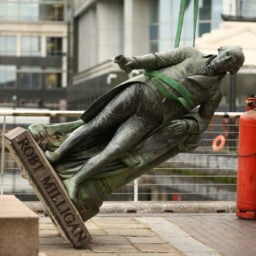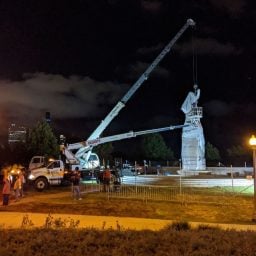In recent days, city officials in both the UK and Belgium have rushed to remove controversial monuments from their streets. The moves grow out of solidarity protests in response to the killing of George Floyd in the US, which have reignited debates about ridding public spaces of monuments that celebrate racist figures from the past.
While Black Lives Matter demonstrators in the US have targeted monuments to Confederate soldiers, in Europe a groundswell of activism has focused on toppling monuments to problematic figures, from slavers to colonizers.
Dramatic images of the toppling of a statue to a slave trader in Bristol during protests over the weekend have spread widely, sparking fierce debate in the UK over other troubling monuments.
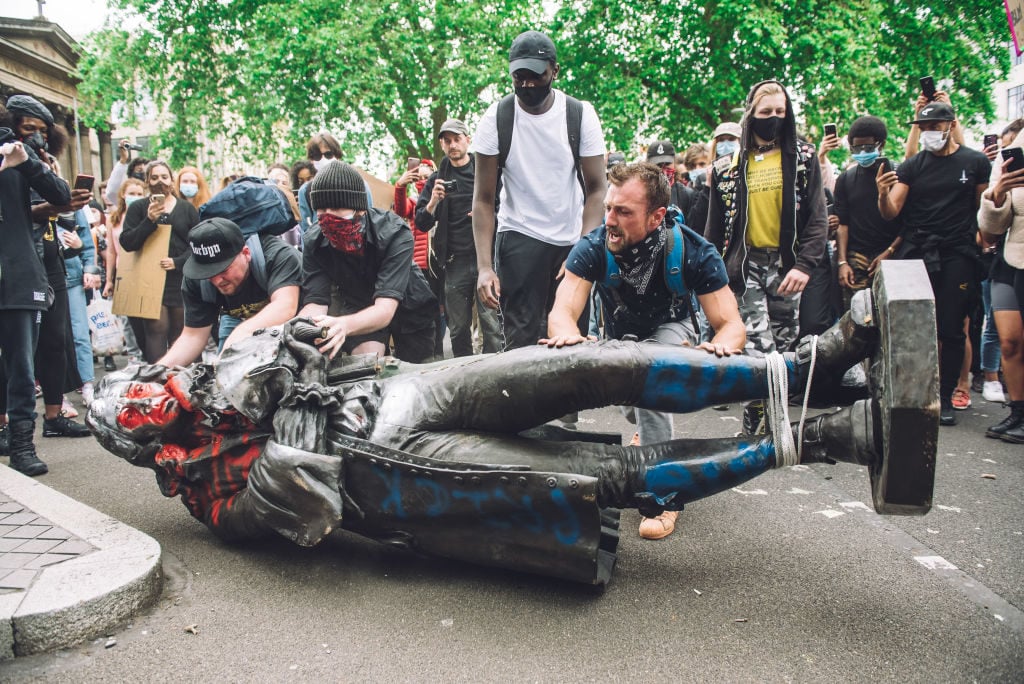
Protesters transporting the statue of Colston towards the river Avon. Photo by Giulia Spadafora/NurPhoto via Getty Images.
The artist Hew Locke, who has been thinking about the symbolism in these kinds of monuments for nearly two decades in his work, explained his reaction to the toppling of the Bristol monument to Artnet News. “I was stunned, quite frankly, and I was quite emotional about it because I have focused on these things for so long,” he says. “It reminded me of when the Berlin Wall came down. You think that things will never change—and all of a sudden radical change happens.”
Confronting Violent Histories
In London, authorities quickly removed a statue of another slave trader, Robert Milligan, outside of the Museum of London Docklands yesterday, June 9, after a petition to remove it gathered more than 2,000 signatures in 24 hours. The local mayor said in a video that the statue had become “the focus of a lot of anxiety and anger” in the community, and would be put into storage.
In response to the uproar, the mayor of London, Sadiq Khan, vowed to review and improve “the diversity of London’s public landmarks.” Khan also acknowledged that “there are some slavers that should come down.”
Hew Locke says the mayor’s decision is welcome, though he remains skeptical. A government “review” could mean that the debate around monuments could “drag out forever” until a “watered down” conclusion is reached.
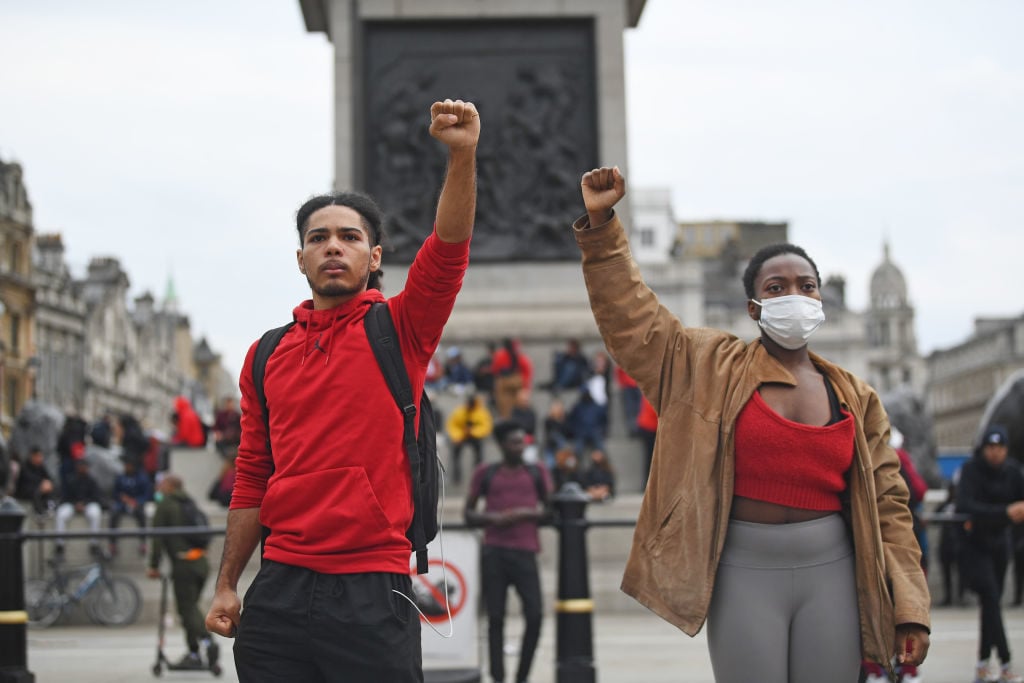
Protesters in front of Nelson’s Column in London’s Trafalgar Square during a Black Lives Matter rally. Photo by Victoria Jones/PA Images via Getty Images.
Taking decisive action about removing some monuments will also inevitably raise questions about others. While there are some monuments celebrating slave traders that need to go, there are all sorts of other monuments that are tied to that history in different ways.
“I think that this is where things are going to get really heated and interesting, because what do you do with people like Nelson?”, Locke asks. Lord Nelson is regarded as one of Britain’s great seafaring heroes, and his statue is an iconic part of London’s Trafalgar Square. It is seldom mentioned as part of his legacy that Nelson was a vocal opponent of abolishing slavery.
In Oxford, debate is resurfacing over what to do with a controversial statue of the Victorian imperialist Cecil Rhodes, which campaigners have been fighting to bring down for years. The leader of Oxford City Council has written to Oxford University’s Oriel College inviting it to request planning permission to remove it from its Grade II listed building, citing a “moral obligation to reflect on the malign symbolism of this statue.”
And in Edinburgh, following calls to remove the Melville Monument in St. Andrew Square, which memorialized Henry Dundas, another staunch opponent of abolishing the slave trade, the city council has promised to add a contextualizing plaque setting out his links to the slave trade “as quickly as possible,” after dragging its heels on for the past two years.
The Legacy of Colonization
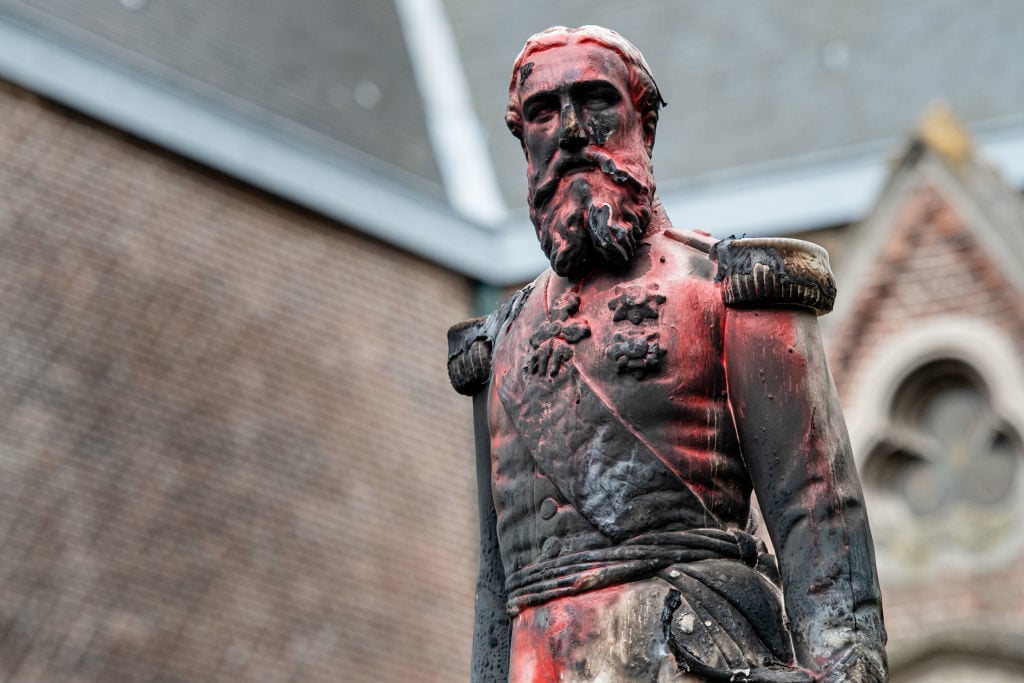
A statue of King Leopold II of Belgium is pictured on June 4, 2020 in Antwerp after being set on fire the night before. Photo by Jonas Roosens/Belga/AFP via Getty Images.
The debate has also swelled outside of the UK to Europe. In Belgium, campaigners have been petitioning to tear down monuments to King Leopold II, a brutal ruler who was responsible for brutalizing and killing millions of people in Congo during the 19th century. Over the weekend protesters targeted various statues of Leopold II in Brussels, Antwerp, and Ghent. Yesterday morning officials in Antwerp removed a statue of the monarch and transferred it to storage in the Middelheim Museum.
“In Belgium, this conversation has been going on since the ‘80s,” the Belgian historian Omar Ba tells Artnet News, adding that activists have been increasingly mobilizing to demand the removal of the statues over the past decade.
“Regularly, different statues of King Leopold II have been painted red or smeared, or even stolen and hidden away,” Ba says. In 2004, activists actually removed the hand from a statue of a Congolese man looking up at a horse-mounted depiction of the king, a gory reminder of a common punishment that was meted out to the Congolese population during Leopold’s reign.
But it is not just statues of Leopold that activists have been focusing on, with protesters taking issue with all statues that have links with colonization.
With regard to the statue that was removed in Antwerp, Ba emphasizes that some press reports have misrepresented the statement being made by local authorities by removing the statue from public view. Protesters had painted the sculpture red two weeks ago, and then last week significantly damaged it by burning it.
“It’s not officially the removal of a colonial statue; it is the removal of a damaged statue,” Ba explains. It has been taken into storage, although the historian adds, “I don’t think that they will be in a hurry to restore it.”
Forward Momentum
While many agree that the removal of offensive monuments from public spaces is long overdue, one of the common questions raised by opponents is whether their removal is a way of erasing history. This question has led many to support relocating them to more appropriate settings such as museums, or leaving them where they are but contextualizing them with explanatory plaques or counter-monuments.
One thing stressed by Hew Locke amid protesters’ victory over tearing down monuments is that the very real and practical causes the Black Lives Matter demonstrators are marching for should not be forgotten.
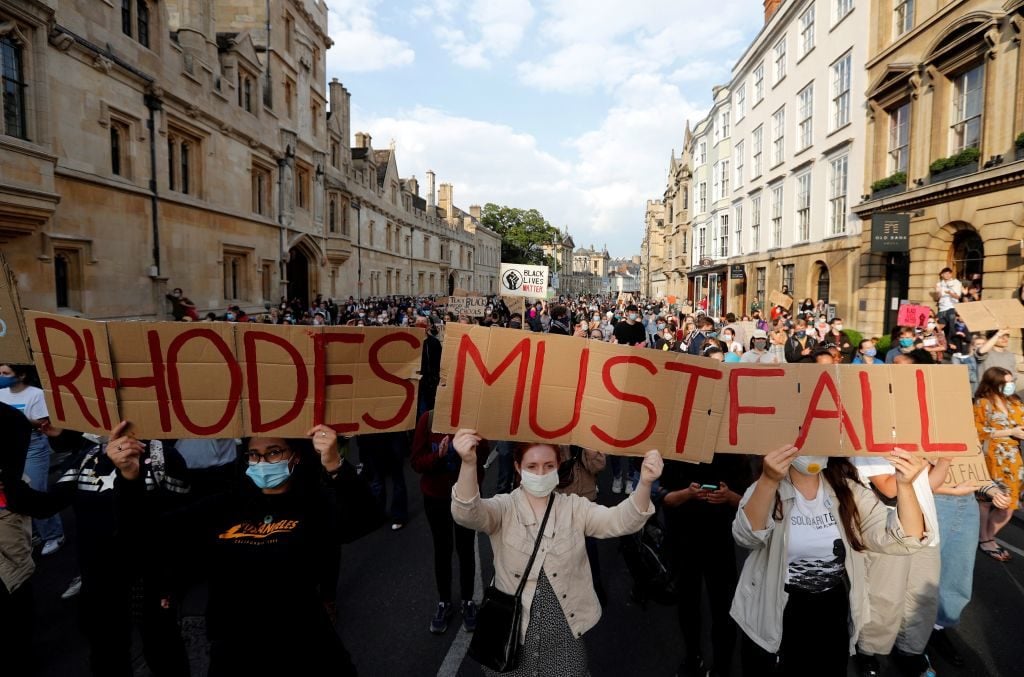
Demonstrators hold placards during a protest arranged by the ‘Rhodes Must Fall’ campaign, calling for the removal of a statue of British businessman and imperialist Cecil John Rhodes, from outside Oriel College at the University of Oxford. Photo by Adrian Dennis/AFP via Getty Images.
“This doesn’t solve the problems of Black, Asian, and Minority Ethnic people in this country. It’s a symbolic gesture,” Locke says. As we head towards another recession that will likely disproportionately impact black and brown people, it is time to think about the systemic changes society also has to make. The artist emphasizes the need to teach and talk about slavery and its legacy in schools.
Similarly, Omar Ba stresses the need for the process of decolonization in society to go beyond tearing down monuments. Among other things, Ba suggests a museum that focuses solely on the issue of colonization. “I think that there should be a real Museum of Colonization like there is a museum of the Holocaust so that people can reflect on that colonial fact,” he says.
That setting would be an appropriate one to display fully contextualized representations from the era, as well as to commemorate its victims and reflect on situations that were produced by that history and its impact on current society. “Institutions should be supporting these initiatives and showing that society is ready to deal with its past,” Ba says.
